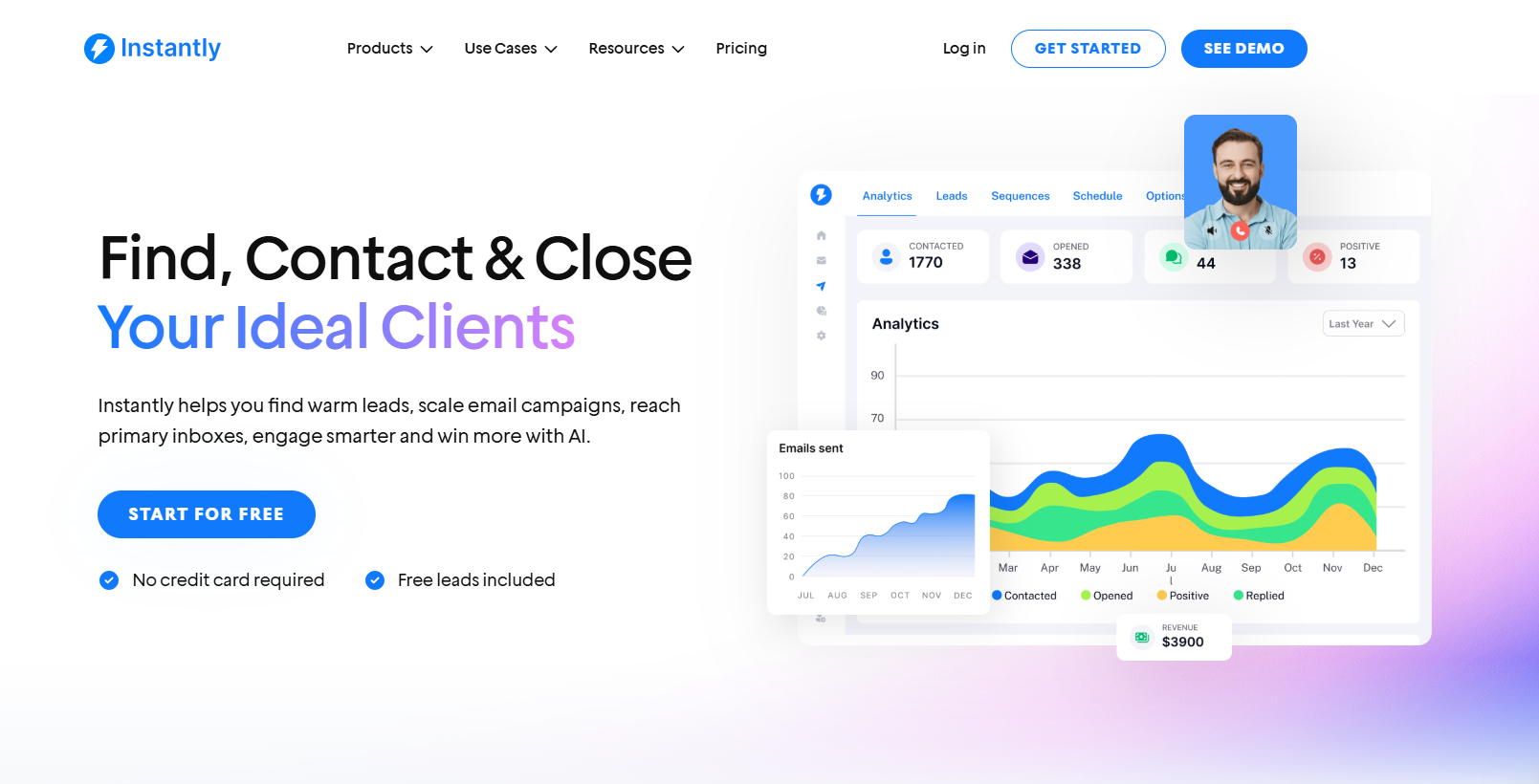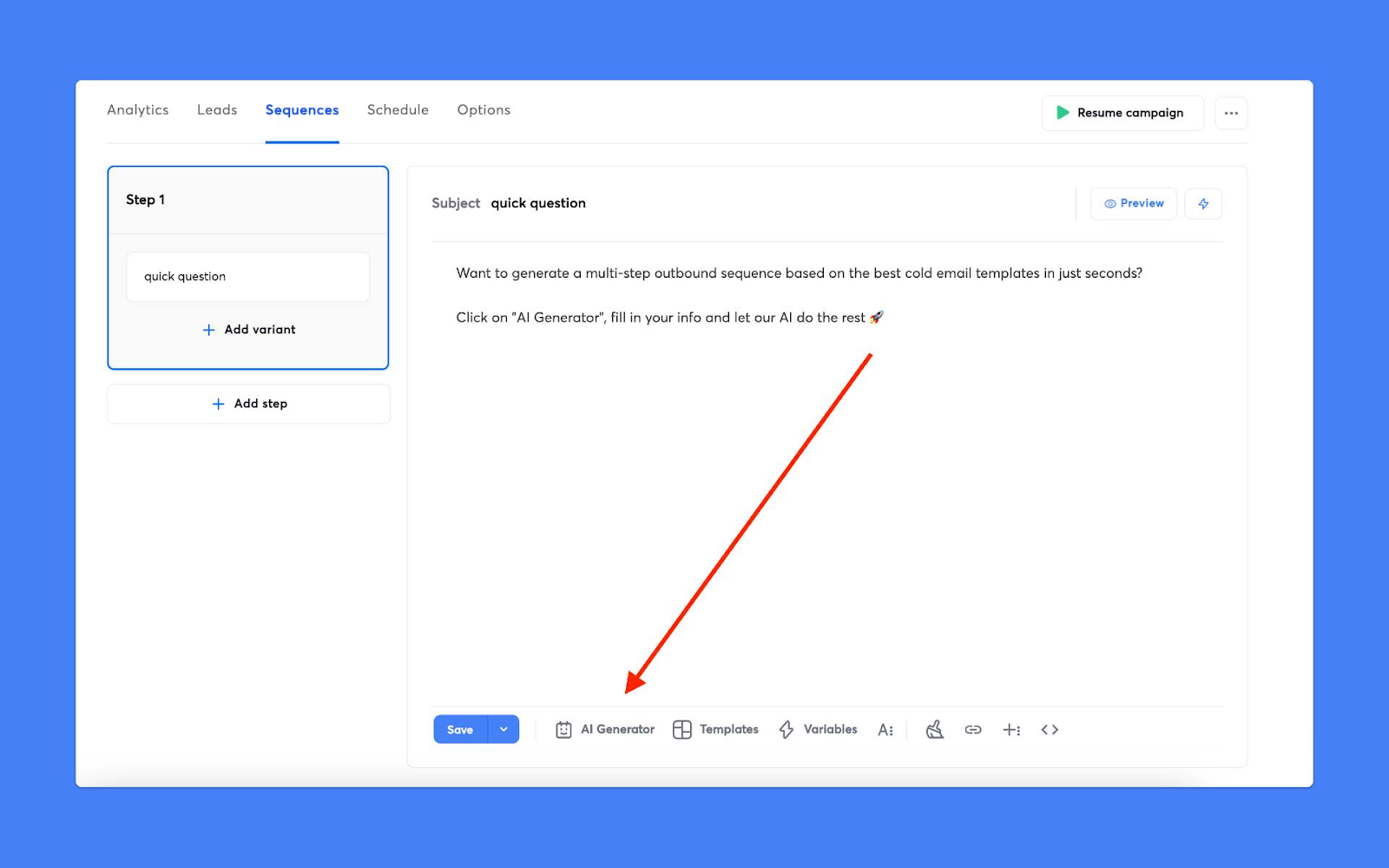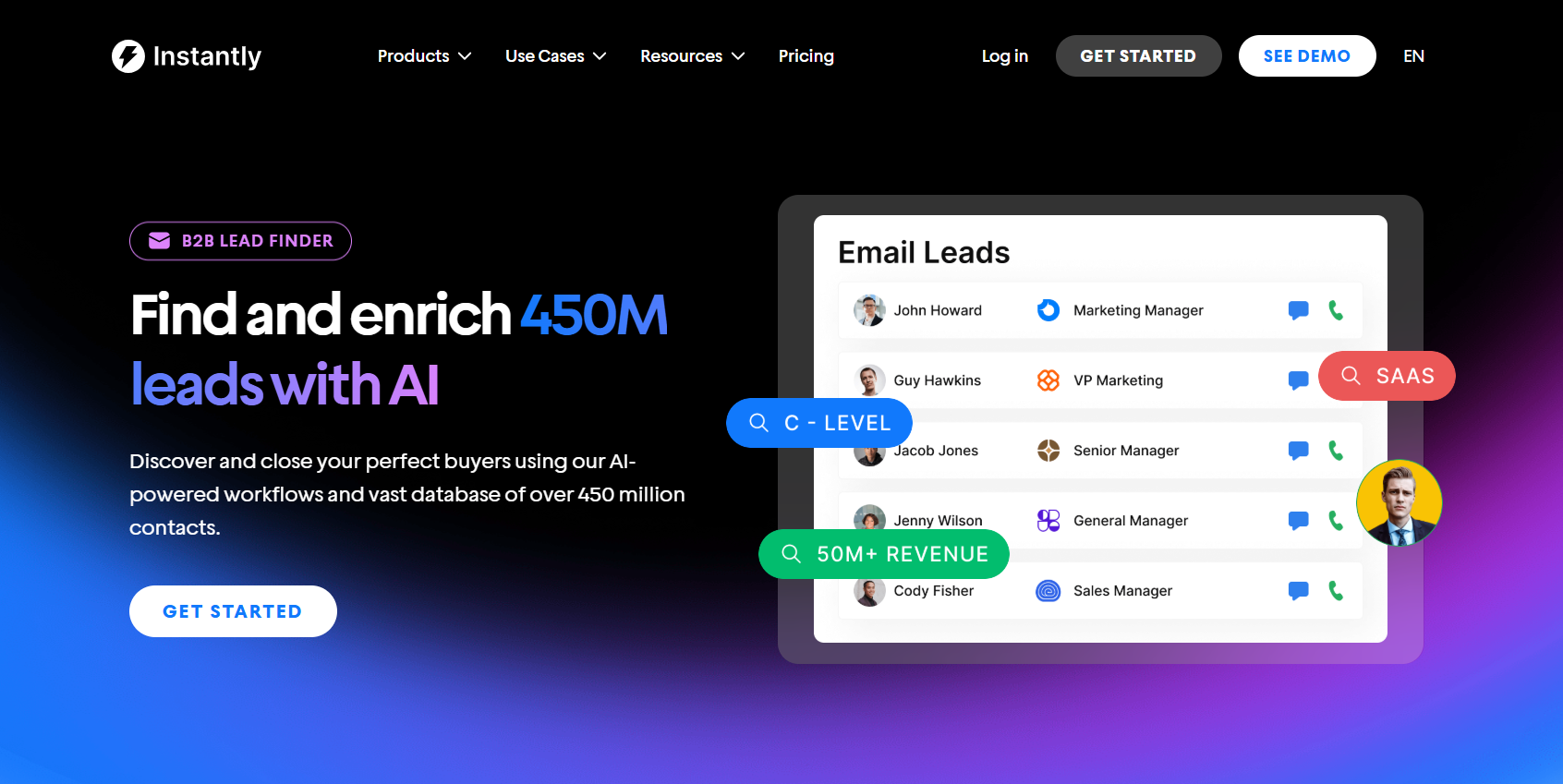How many touchpoints before a sale? It's one of the most common (and misunderstood) questions in sales. You’ve probably heard guesses: 7, 8, maybe 12. But the truth isn’t a fixed number. It depends on your buyer, your timing, and how well each touchpoint fits into their decision-making process.
A touchpoint can be anything: a cold email, a product demo, an ad impression, or a LinkedIn message. Buyers today rarely move in a straight line. They zigzag. They ghost. Then, they resurface, sometimes before you even know they’re in-market.
The better question is: which touchpoints actually make an impact? And how do you string them together without becoming white noise? Touchpoints require mapping the right sequence to your buyer’s journey, then adjusting on the fly.
This guide breaks down not just the numbers but the nuance behind them so you can build sequences that connect, convert, and close.
How Many Touches Does It Take to Close a Sale?
The “marketing rule of seven” is pretty much obsolete. B2B deals now span more channels, take more time, and require more persistence than ever. Teams try everything: outbound emails, LinkedIn DMs, retargeting ads, webinars, and cold calls, hoping for that golden moment when a prospect finally says yes.
But the true scope of effort is easy to underestimate. Recent data paint a picture of B2B buyers being swamped by outreach, yet still demanding more proof and personalized attention before making a purchase. Across all industries, deal sizes, and funnels, the number of necessary interactions keeps rising.
Let’s look at what the latest research reveals about today’s sales journey:
B2B sales cycles now demand more touches than ever. According to HockeyStack’s 2024 touchpoint report:
- B2B SaaS companies average 2,879 impressions and 266 touchpoints to close a deal (up 20% year-over-year)
- $50,000–$100,000 deals see 3,035 impressions and 309 touchpoints
- Deals above $100,000 approach 5,500 impressions and 417 touchpoints
These numbers define the workload facing every revenue team. Higher-value opportunities require more touches, a tighter sequence, and more personalized effort. Dig deeper, and you’ll find that your prospect’s intent and where they enter your sales funnel both change what it takes to close.
EmailToolTester’s 2025 research shows touchpoints by prospect type:
- Inactive customers: 1–3 touches
- Warm inbound leads: 5–12 touches
- Cold prospects: 20–50 touches
Most teams miss because they chase a fixed number. The target changes with deal size, pipeline stage, and prospect quality. The averages show the baseline. Adapt your sequence, and you’ll outperform static, one-size-fits-all outreach.
Why the Number Changes (and What Counts)
Every deal follows its own roadmap. The number of touchpoints isn’t set in stone. It pivots with buyer intent, deal value, and how your prospect prefers to communicate. Selling into a five-person startup looks nothing like chasing down an enterprise contract. One prospect jumps on a call after three emails. Another dodges outreach for months, only responding after a LinkedIn message or live event.
Channel mix plays a big part. Calls, emails, demos, and social touches each play a distinct role. The most persistent teams don’t just stack up messages; they mix formats and time their follow-ups to match real buying signals.
Cadence matters, but context wins. Pushing hard with generic touches burns out good leads. Sequencing based on what buyers do (what content they engage with, which channels they use, when they reply) sets top sellers apart.
The takeaway: personalize your touchpoint plan. Adaptive, real-time sequencing beats the old one-size-fits-all approach every time.
Mapping Touchpoints to the Buyer’s Journey
Not every interaction carries equal weight. Where a buyer is in their journey will dictate which touchpoints make a difference and which ones fade into the background.
Early in the process, you’re building awareness; think LinkedIn posts, targeted ads, and content downloads. These moments might not trigger replies, but they open the door and plant your brand in the prospect’s mind.
As interest builds, the channel mix shifts. Buyers who’ve read blog posts might jump into a webinar or respond to a personalized email. Case studies, product demos, and consultative calls start to get measurable results. At this stage, relevance and timing become critical. Sending the right message after a product page visit or answering a pricing question can turn passive interest into action.
During final decision cycles, the focus narrows. Prospects want proof, social validation, and a clear path to value. Quick follow-up after a live demo, a timely customer testimonial, or a one-on-one call often seals the deal.
Here’s how common touchpoints align with each stage:
| Stage | Typical Touchpoints | Example Actions |
|---|---|---|
| Awareness | Social posts, paid ads, SEO content, webinars | LinkedIn post, retargeting ad, ebook download |
| Consideration | Personalized emails, product demos, case studies | Email sequence, demo request, ROI guide |
| Decision | 1:1 calls, testimonials, pricing pages, custom offers | Demo follow-up, customer story, contract review |
No two journeys are identical. Audit your funnel for gaps. Look for stages where leads stall or go dark. The smartest teams build touchpoint maps, then use analytics to spot missing links and optimize every step.
Cadence and Channel: Building a Sequence That Converts
There’s no single playbook for touchpoint cadence. The best teams mix channel, content, and timing to match their buyers’ speed, not their own. Pushing twenty emails in two weeks? Guaranteed to get flagged as spam. Going silent for a month? Your deal slips into someone else’s pipeline.
Think of cadence as a blend of persistence and patience. Some prospects respond to three quick touches in a week. Others need steady, low-pressure outreach spread over a month or more. The right sequence adapts in real time, adjusting frequency and format based on opens, clicks, replies, and even non-responses.
Multi-channel beats single-channel, every time. Layer cold emails with social touches, phone calls, and targeted remarketing. Each channel offers a new avenue for relevance and gives you more data on what’s working.
- Email: Great for direct value, resources, and follow-ups
- Social (LinkedIn, X): Ideal for softer nudges, brand visibility, reconnecting with “silent” leads
- Phone: High-touch, best for breaking through later in the cycle or with key stakeholders
- Ads: Keep your brand top-of-mind between messages
Balance the sequence. Push too hard, and you’ll get ignored. Space out the right touches, and you’ll stay relevant without exhausting your list. Top sellers watch engagement data and adjust on the fly, using real buyer actions to shape their next move.
Making Every Touchpoint Count

Not all touches are created equal. Sending cookie-cutter follow-ups or mindless check-ins only increases noise and wastes your shot at real engagement. The best touchpoints deliver something useful every time. Value could mean sharing a relevant case study, answering a specific problem, or simply making your outreach feel personal instead of automated.
Data isn’t just for tracking. Let it shape what you send, when, and how often. Notice when prospects engage with product pages, content, or previous messages, then tailor your next move. Referencing a prospect’s recent accomplishment or business milestone always beats a generic “just checking in.”
Personalization isn’t a one-time trick; it’s a habit. Every message should prove you understand where the buyer is, what they care about, and why your solution fits now. When done right, even the fifth or eighth touchpoint feels relevant and stands out.
Small effort, big payoff: audit your last email sequence. How many touches offered real value, not just another nudge? Optimize with intent, and every touchpoint moves the deal forward.
When to Double Down (and When to Stop)
Persistence works, but only when it’s strategic. Pushing past the right number of touches can nudge deals forward, but ignoring clear signs of disinterest wastes time and harms your brand. Every sequence hits a point where more follow-up becomes counterproductive.
Look for signals that it’s time to adjust or pause outreach. Unsubscribes, repeated out-of-office replies, or a steady stream of unopened emails all point to diminishing returns. The best teams set thresholds—“x” touches or “y” days without engagement. Then review or switch up their approach.
Sometimes, stepping back wins you more trust than another follow-up. Use automation to track engagement and set clear rules for when to escalate, pause, or recycle leads into a nurture flow. Smart sellers know when to move on, freeing up bandwidth for prospects who are still in play.
Review your current cadence: Are you pressing forward based on real buying signals, or are you stuck on autopilot? The line between persistence and pestering is thinner than ever.
Turning Research Into Results With Instantly.ai

All the data in the world means nothing if you can’t act on it. The sales teams winning right now aren’t just tracking touchpoint averages; they’re using automation to adapt their outreach in real time. Instantly.ai pulls all the moving parts together: sequencing, multi-channel outreach, analytics, and real engagement signals.
Smart Sequencing and Multi-Channel Outreach
Automate follow-ups with customized triggers. Instantly lets you build dynamic, AI-powered sequences across email, social, and more. Set your rules: change cadence by buyer stage, switch channels if engagement drops, or add more touches for high-value leads. Every sequence adapts on the fly. You stay relevant without extra effort.

How to use it: Use Instantly’s campaign builder to map out your sequence. Drag and drop touchpoints (emails, InMails, calls) into the flow. Assign conditions: If a prospect doesn’t open an email, cue a LinkedIn touch. If they reply, shift them to a later stage. No manual juggling.
Analytics and Funnel Visibility
Spot drop-offs and optimize every step. Instantly tracks open rates, clicks, replies, and sequence completion. See exactly where leads stall, and which messages get them moving again. Testing takes minutes: run A/B subject line tests, compare channel performance, and double down on what works.
How to use it: Check your campaign analytics dashboard daily. Look for high drop-off points or touchpoints with low engagement. Tweak subject lines, switch up timing, or swap in new content. All changes reflect instantly across your active sequences.
Engagement Scoring and Lead Prioritization
Don’t waste time chasing dead ends. Instantly scores every lead based on engagement: opens, clicks, replies, and more. High-engagement prospects move up in your priority queue; cold leads shift automatically to nurture campaigns or pause until reactivation.

How to use it: Find and enrich leads in Instantly’s B2B lead database with over 450 million verified contacts. Then, set your engagement criteria inside your sequence. If a lead reaches a certain score, prompt a direct outreach or personalized call. Low scorers can be cycled out or placed on a lighter touch sequence, saving your focus for the deals that matter.
Harnessing these features isn’t just about working faster. It’s about making every interaction count and letting data drive your next move. With Instantly, your outreach is a repeatable, high-converting process.
Key Takeaways
The right strategy turns outreach from busywork into real progress. The data shows that just hitting a quota isn’t enough. Success goes to teams who adapt, personalize, and learn with every sequence.
Summing up the core lessons:
- One-size-fits-all doesn’t work. Touchpoint count shifts with buyer, channel, and deal size.
- Mapping touchpoints to every stage drives deals forward and keeps leads from falling through the cracks.
- Channel and cadence must adapt in real time. Data-driven outreach always outperforms rigid schedules.
- Value trumps volume. Each touchpoint should offer something useful, not just add to the inbox clutter.
- Analytics and automation (especially with tools like Instantly) turn averages into actions. Every step is tracked, optimized, and repeatable.
The teams that win use every tool at their disposal and adjust their approach at every stage. Every touchpoint becomes a clear next step toward real results. Instantly.ai sets you up for success from the get-go. Start your free trial.




